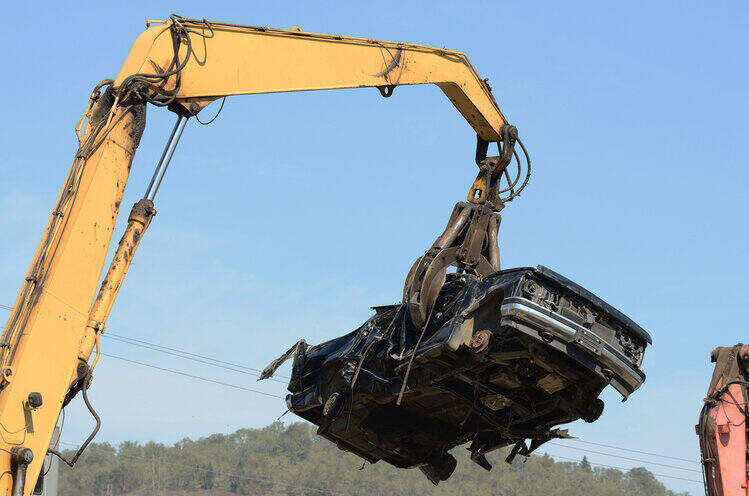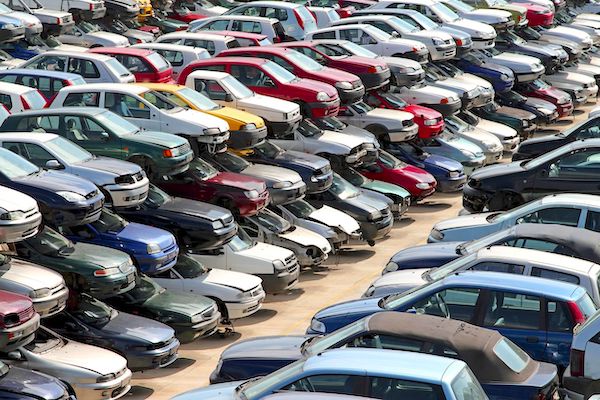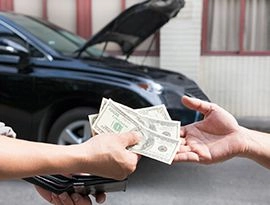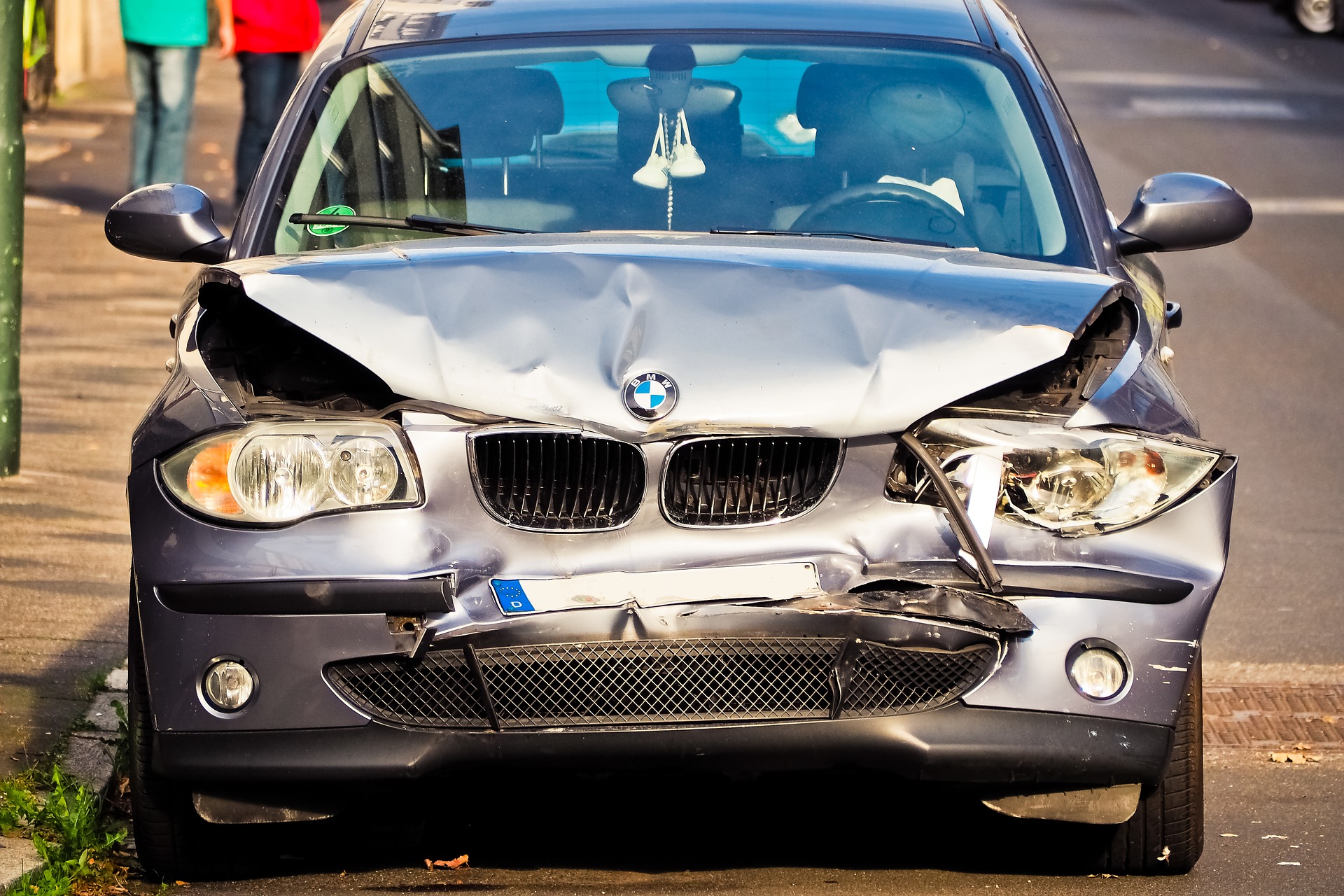Cars are important to our way of life. They help people get around and give them freedom, but they take up a lot of room in landfills.
Luckily, their parts can be used to make new products that will last for decades or even centuries. Recycling cars is one way to cut down on the number of cars on the road and keep trash from piling up in landfills.
What Happens During the Recycling Process?
The car is put on a hydraulic press, which presses down on it until it is broken. Most of the time, the press can hold between 2 and 6 tons. The car is then taken to a scrap yard or recycling center and sold there. The car’s metal is recycled and used in many different ways.
People who need replacement parts for their cars can buy car parts that are still in good shape. Recycling helps cut down on the amount of trash that ends up in landfills and helps keep resources from running out.
Why is Car Crushing Common in Canada?
In Canada, car crushing has the obvious benefit of taking up less space in landfills and at home. Steel makes up 65 percent of junk cars, while other metals, glass, rubber, and upholstery make up the remainder. While scrap steel and iron prices fluctuate, they tend to hover around $250 per ton.
What Happens to the Reusable Parts?
A vehicle is often inspected upon arrival at a junkyard. Fluids such as oil, gas, antifreeze, gearbox, and brakes are emptied and either disposed of or repurposed after being filtered.
To clean the engine and transmission, they must be taken out of the car. Batteries and tires are also taken out of vehicles for reuse or recycling.
Depending on the type and manufacturer, you may be able to salvage components like the car’s headlights, taillights, and interior trim.
The remaining metal is crushed into a powder, including the car’s body.
Pros and Cons of Crushing Cars
There are several choices available when it is time to get rid of an old car. It can be recycled in a number of ways: scrapped, sold privately, or as a trade-in. Although you may be able to make some money by trading it in or selling it privately, you will get the greatest money from scrap metal yards. And if you’re in the mood to put in some extra effort, you can smash it yourself and pocket the profit.
Before you decide to turn your car into scrap metal, it’s important to weigh the benefits and drawbacks.
Pros
- Crushing your own automobile for scrap metal is a great way to get some additional cash. Crushed cars get higher prices at scrap yards than their uncrushed counterparts.
- Crushing an automobile is a simple operation. An automobile crusher and a large metal bin are all that are required.
- Having your car’s metal recycled reduces the quantity of trash that ends up in landfills.
Cons
- There isn’t much room left after putting it away. Crushing a car increases the amount of space it takes up significantly. Before taking the smashed vehicle to the scrap yard, you’ll need a spacious place in which to keep it.
- It’s messy. It’s an unpleasant, messy job to crush cars. It might not be the ideal choice if you don’t want to deal with the mess.
- You could potentially ruin the metal that can be recycled. Crushing your car could cause damage to the metal underneath if you aren’t careful. Because of this, you can get less money for your scrap metal.
Also Read: What is needed to scrap a car?
Why Crush Cars for the Metal?
The quick answer is that recycled ferrous and nonferrous metals retain their characteristics. They can also be recycled multiple times. Recycled steel accounts for about 40% of global steel production.
It is clear from this that scrap metal has a monetary value throughout the supply chain. Scrap automobiles, or crushed cars, are the primary source of ferrous metal in the United States and the rest of the world.
How Does Crushing Cars Help the Environment?
If iron and steel factories used ferrous scrap instead of virgin materials, they could cut their CO2 emissions by 58%. In a sector notorious for its carbon dioxide emissions, this is particularly favorable.
We not only see a drop in carbon dioxide output, but also a significant decrease in energy consumption. Steel recycling uses about 60 percent less energy than primary steel production. Therefore, making new steel out of ferrous scrap is a financially sound endeavor.
To put that in perspective, the yearly electricity savings from this measure would be sufficient to power almost 18 million homes.
An estimated 85 million barrels of oil are never utilized again in the production of new or replacement auto parts because of recycling.
Using recycled steel instead of new iron ore lessens the negative environmental effects of mining, such as groundwater pollution.
Also Read: Cars with best catalytic converters for scrap
Should You Crush Your Car in the Future?
There are a few considerations to make before deciding whether or not to crush your own car for scrap metal. Let’s start with the obvious question: how much metal is in the vehicle? Second, how does car crushing work in your region? Finally, how is the car’s condition?
It would be worthwhile to crush the car yourself if most of its components are metal. You won’t have to worry about anyone else crushing or taking away the scrap metal, and you can sell it for a decent price.
To the extent that your locality has legislation addressing the destruction of motor vehicles, you must comply with that legislation. There are jurisdictions where a permit is required to crush automobiles, so take that in mind.
Summary
Crushing vehicles for scrap metal may be on the rise in Canada for a variety of reasons. However, there are certain drawbacks to think about before making such a hasty decision, despite the fact that it’s simple and can save you money on the cost of recycling your car.
Your options may vary based on the type of deal you seek and the amount of physical and mental space you have to dedicate to the endeavor. To know everything about car crushing and you want cash for scrap cars, get in touch with AKR Towing and Scrap Car Removal today.




